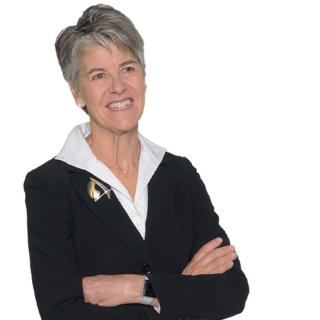A career in private practice let Christine Sinsky, MD, build family freedom and a work-life balance while keeping the door open to leadership opportunities.
Hospital and health system employment can offer stable income and leadership opportunities in large organizations, but many physicians need something else: work-life balance, time to raise a family and greater control over their personal and professional lives.
That's part of what Dr. Sinsky, an AMA member, found in private practice. Dr. Sinsky, an AMA member, said her decision to join that kind of practice setting allowed her to not only manage her family life, but also to help lead a practice and innovate in patient care.
“Don't be afraid of private practice,” said Dr. Sinsky, the AMA’s vice president of professional satisfaction and an internist with decades of experience in private practice in Dubuque, Iowa. “There’s a lot of upside to private practice, particularly in the autonomy and control dimensions of your life. And those become much more important than compensation over time.”
Every September, the AMA celebrates women physicians, residents and medical students during Women in Medicine Month. The pandemic posed another set of challenges for women physicians to surmount. That is why the AMA thanks the women physicians who are tirelessly advancing equity and creating change. This September, the AMA is recognizing the endurance and strength demonstrated by women in medicine through the challenges of the past year while being an advocate and ally.
Not a grand design
Dr. Sinsky and her husband Tom Sinsky, MD, joined Medical Associates in Dubuque, Iowa, which at the time was a 60-physician multispecialty group. Now grown to over 150 physicians and advanced practice providers, the practice was her home for more than 30 years.
“I was very fortunate to fall into a private practice setting that allowed me to grow in a career in a way I would not have been able to anticipate as a newly minted physician,” said Dr. Sinsky, who retired from practice prior to the COVID-19 pandemic. “So, I feel like I landed in a really good place, but I can't take any credit for having had the discernment and the wisdom to choose that really good place.”
There are pros and cons to almost every physician career path, she said, but private practice granted a level of autonomy that other practice settings might not have. That included the ability to better manage her time and raise a family.
“Now, looking back, having chosen a physician-owned multispecialty practice—and a particular practice that did put a lot of decision authority onto the physician for how they wanted to run their practice, their individual practice—that was a blessing that I didn't know to look for,” she said.
Combining work and family
“I often credit our children with both keeping us sane and helping us be more efficient because there was a very compelling reason why I needed to be sure that the work didn't extend beyond the time that I had given it, because I had a second- and a fourth-grader on the sidewalk after school waiting to be picked up,” Dr. Sinsky said.
“When our kids were younger, we created these more efficient systems and stronger teams,” she added. “And I don't think that I could have done that as well outside of a private practice setting.”
Learn more about Dr. Sinsky’s innovative work to help transform physician practices to prevent doctor burnout in this AMA Moving Medicine magazine profile, “A quest to never waste a step.”
With a large enough private practice, you will still have leadership opportunities and can engage and influence those aspects of medicine that are of interest to you, Dr. Sinsky added.
“You can have the best of all worlds, and you can customize that to your own particular desires and where you are in your career,” she said. “If you have young children, you may not want to be that engaged in some of the running of the business, but as you progress you may find that really satisfying.”
It takes astute clinical judgement, effective collaboration with colleagues, and innovative problem-solving to succeed in an independent setting that is often fluid, and the AMA offers the resources and support physicians need to both start and sustain success in private practice.
Find out more about the AMA Private Practice Physicians Section, which seeks to preserve the freedom, independence and integrity of private practice.




